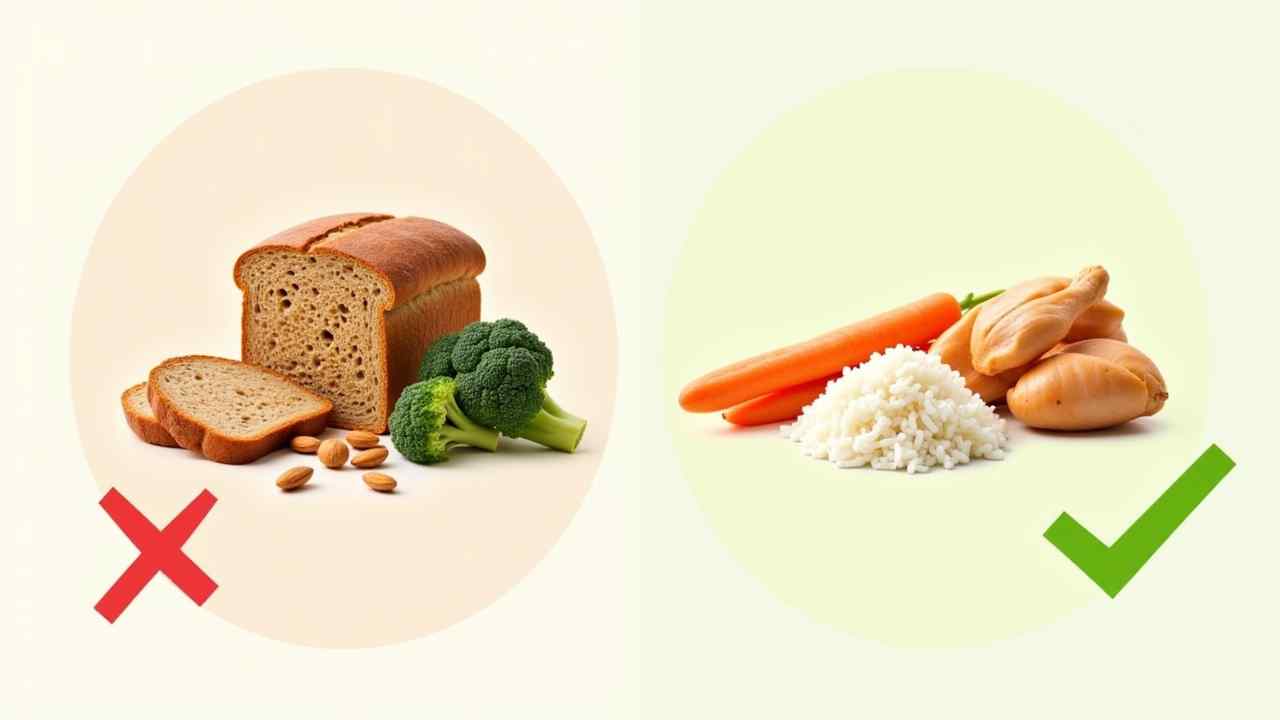
🩺 A Guide to the Low-Fiber, Low-Residue Diet (Medical Guide)
🩺 A Medical Guide to the Low-Fiber, Low-Residue Diet 🩺
❗ CRITICAL MEDICAL INFORMATION: A low-fiber, low-residue diet is a short-term, therapeutic diet. It is prescribed by a doctor for specific medical reasons. You must only follow this diet under the guidance of your healthcare team. It is not a weight loss plan and is not intended for long-term use.
If your doctor has recommended a low-fiber diet, you are likely preparing for a procedure or healing from a digestive issue. The goal is to give your bowels a rest. But the food list can be the opposite of what is normally considered "healthy."
This guide will explain what this diet is. We will provide a clear list of what to eat and what to avoid. Let's make this temporary eating plan as simple as possible. ✅
🤔 What is the Purpose of This Diet?
The purpose of a low-fiber, low-residue diet is to reduce the amount and frequency of your stools. Fiber is the part of plant foods that your body cannot digest. "Residue" is any undigested food, including fiber, that makes up stool.
By limiting these foods, you reduce the workload on your digestive system. This allows it to heal. This diet is often prescribed before or after bowel surgery. It is also used during flare-ups of conditions like Crohn's disease, ulcerative colitis, or diverticulitis.
✅ What Foods Are Generally Allowed?
On this diet, you will choose foods that are very easy to digest. This means refined grains and well-cooked vegetables without skin. Here are the foods you should focus on.
- Refined Grains: This is one of the few times white is better! White bread (like plain Turkish "beyaz ekmek"), white rice, plain crackers, and pasta made from white flour are the staples.
- Well-Cooked Vegetables: Vegetables must be well-cooked and have no skins or seeds. Good choices include peeled carrots, green beans, and peeled zucchini ("kabak").
- Fruits without Skin or Seeds: Ripe bananas and melons are good choices. You can also have fruit juices with no pulp.
- Lean Protein: Tender, well-cooked poultry, fish, and eggs are perfect.
- Dairy: Milk, plain yogurt ("sade yoğurt"), and cheese are usually allowed in moderation, as long as you tolerate them well.
🚫 What Foods Must Be Strictly Avoided?
This is the most important part of the low-fiber, low-residue diet. You must avoid all high-fiber foods. These foods create more residue and make your digestive system work harder.
- All Whole Grains: This includes whole-wheat bread, brown rice, oatmeal, and quinoa.
- All Raw Vegetables: No salads of any kind. A fresh chopped salad like a "çoban salata" must be avoided.
- Most Raw Fruits: Especially those with skins or seeds, like apples and berries.
- All Dried Fruits, Nuts, and Seeds: This includes favorites like dried figs ("kuru incir"), walnuts ("ceviz"), and hazelnuts ("fındık").
- All Legumes: This means no beans, chickpeas, or lentils ("mercimek").
- Tough, Gristly Meats: These can be difficult to digest.
Remember, this is a temporary diet. It is a healing phase. The crisp autumn weather here in Bursa is perfect for enjoying a warm, simple, and comforting meal from the "allowed" list. Follow your doctor's instructions carefully. Soon, you will be able to gradually reintroduce fiber back into your diet. 🥣